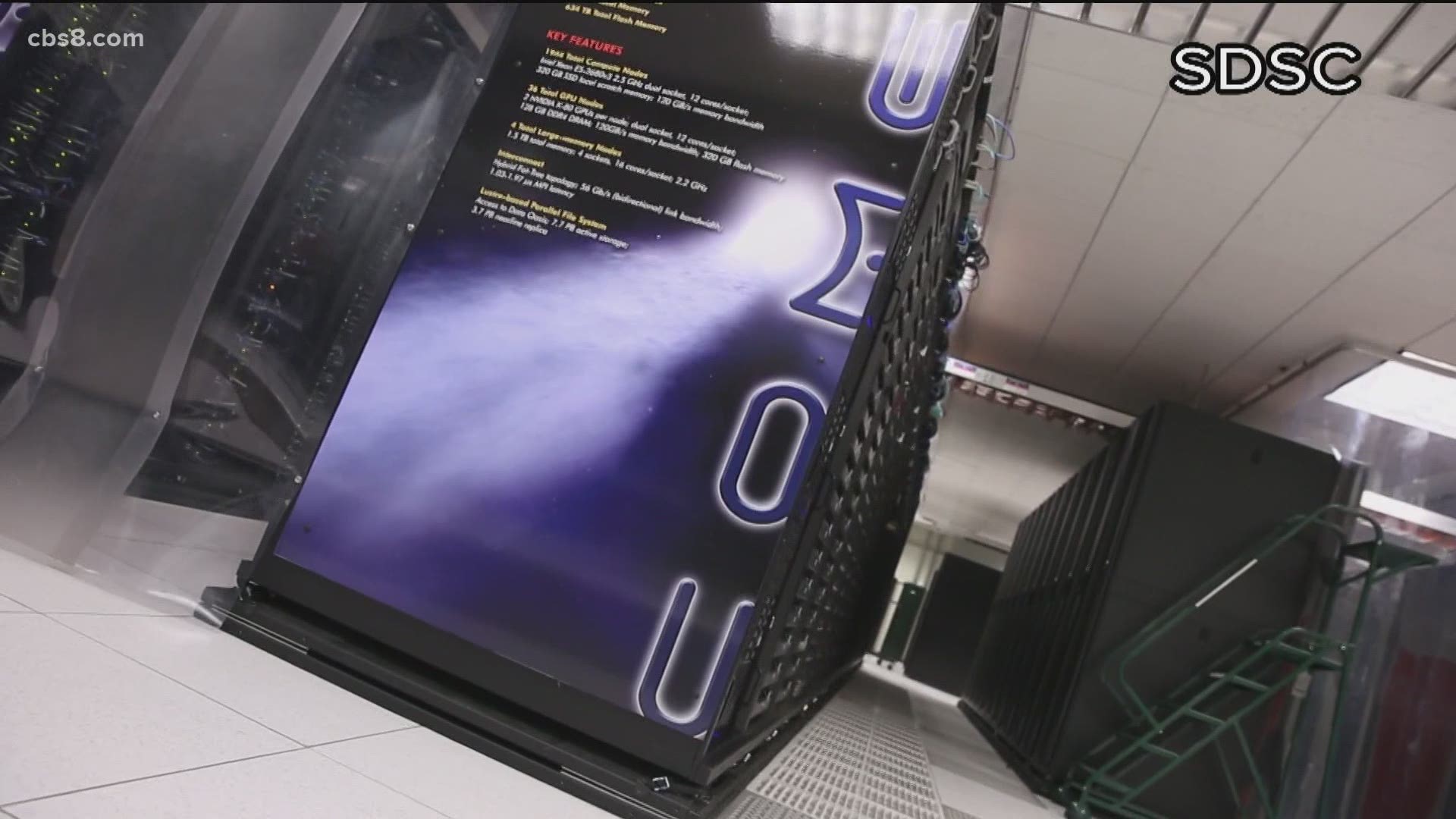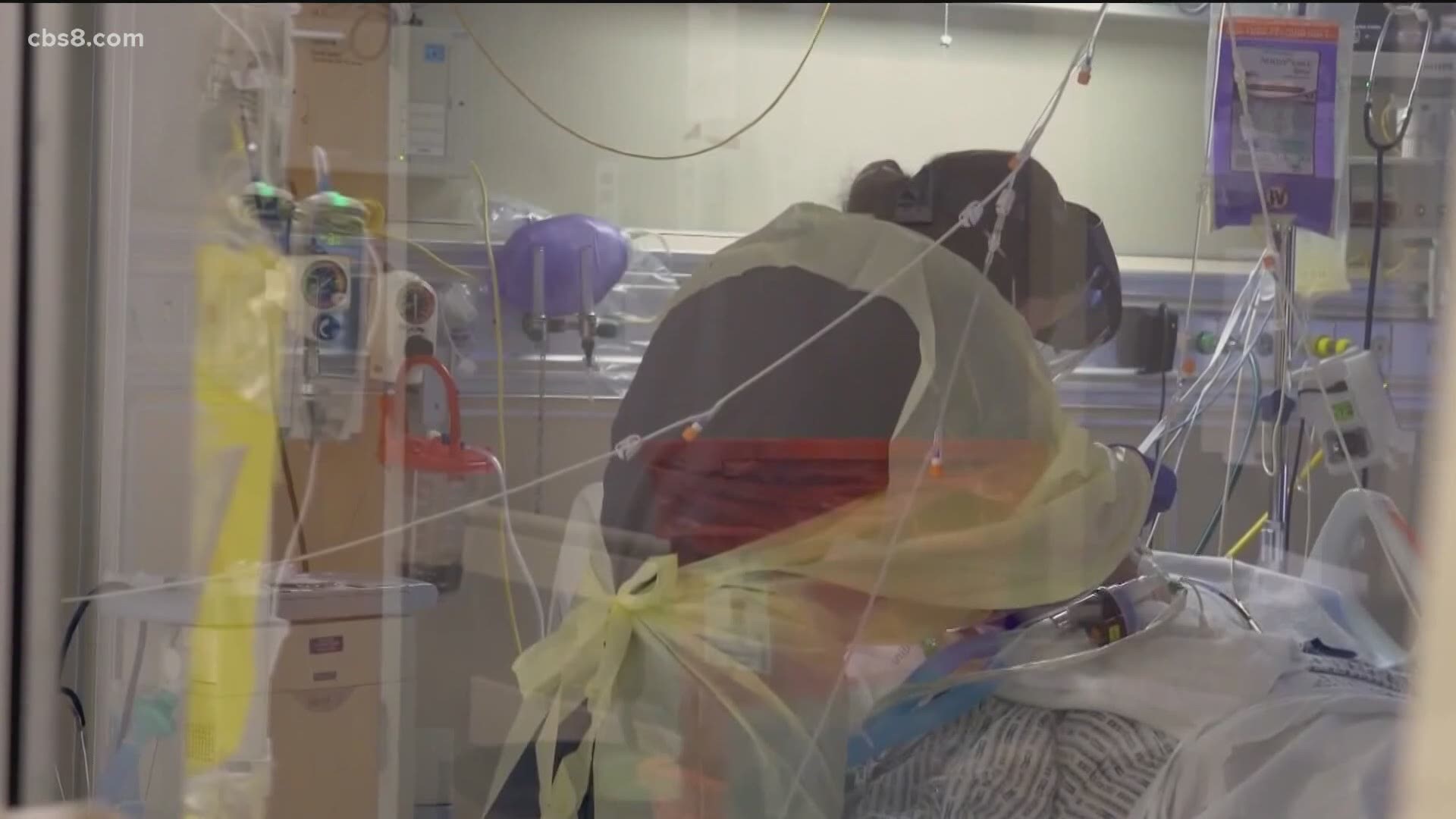SAN DIEGO — On the campus of UC San Diego, the San Diego Supercomputer Center is one of the premier locations for cutting edge research in fields from medicine to geology and beyond.
But what is a supercomputer? It’s actually thousands of computers linked together but is run like you’re using a single computer. This allows programs to run massive simulations and data analysis for a wide variety of subjects. The data provided by the supercomputer can take years off of scientific research that’s done in the traditional way.
“From the beginning of development of drugs to finishing it, it takes sometimes seven to 10 years,” said Valentina Kouznetsova, a researcher at the San Diego Supercomputer Center. “We don’t have this time with COVID-19.”
Kouznetsova and her research partner Igor Tsigelny have been running complex simulations to see if we already have approved drugs that can help smother the COVID-19 virus.
“The most important thing is to try to keep it simple to prevent reproduction of this virus.” saidTsigelny
The two professors identified 64 already approved drugs and ran simulations to see how they would affect the virus. These existing drugs are used to fight HIV, Hepatitis C and even high cholesterol.
Though the drugs weren’t designed to fight COVID-19, Kouznetsova and Tsigelny can identify specific proteins and develop new drugs to fight the virus. It’s a process made significantly easier with access to a computer that runs trillions of simulations at a time. With data from countries around the world, the computer can help the team develop drugs to fight all kinds of diseases.
“We develop drugs against Parkinson’s, glioblastoma and some other diseases potentially.” Says Tsigelny
Whether it be man or machine, San Diego Supercomputer Center and UC San Diego are leading the charge in groundbreaking innovation.


